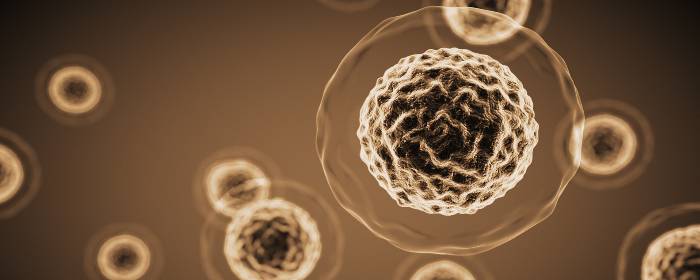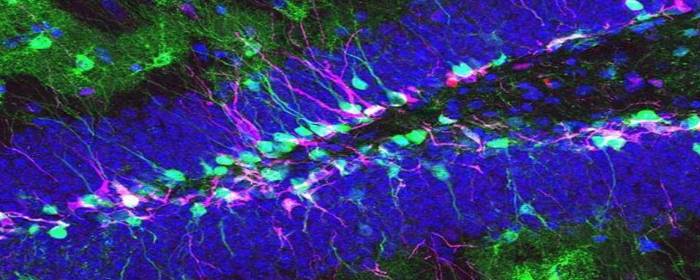
by admin | Sep 20, 2019 | Parkinson's Disease, Progressive Supranuclear Palsy, Stem Cell Research, Stem Cell Therapy, Supranuclear Palsy
Progressive supranuclear palsy, also known as PSP, is a disorder of the brain that gets worse over time (progressive neurodegenerative disorder). Many progressive supranuclear palsy symptoms are similar to Parkinson’s disease. These include rigidity, slowness of movement, cognitive (thinking) problems, difficulty speaking, and difficulty swallowing. While people with Parkinson’s disease can have an unsteady gait and “freeze,” these symptoms are much more prominent in people with progressive supranuclear palsy. Likewise, people with PSP have a particular eye problem called supranuclear gaze palsy, which causes PSP patients to have difficulty moving their eyes in certain directions.
Despite the similarities between PSP and Parkinson’s disease, there are no treatments for progressive supranuclear palsy as they are for Parkinson’s disease. Drugs like levodopa help reduce tremors and rigidity in people with Parkinson’s, but they have been largely ineffective in people with PSP. Some PSP patients may benefit from drugs like levodopa, but most experience severe visual hallucinations or other side effects, which causes them to stop the medication. Because there are so few treatments, patients with progressive supranuclear palsy rely on supportive care measures such as occupational and physical therapy, nutritional support, and palliative care.
To address this critical need, researchers are testing mesenchymal stem cells for their ability to treat progressive supranuclear palsy. Dr. Margherita Canesi and her colleagues selected five patients with progressive supranuclear palsy. Her research team used bone marrow from healthy volunteers to select healthy mesenchymal stem cells. The researchers then infused the mesenchymal stem cells into patients in a single infusion.
While patients with PSP normally deteriorate rapidly, the patients who received a single stem cell treatment remained stable for at least six months after treatment. Some patients still maintained function at the end of the study (12 months). All patients tolerated the treatment well, there were no major side effects. While the study was small, it suggests that stem cell treatment was able to change the natural course of the disease. Based on these encouraging results, the authors have set their sights on a randomized, placebo-controlled phase 2 study to further test mesenchymal stem cell treatments in patients with progressive supranuclear palsy. We look forward to their results with great enthusiasm.
Reference: Canesi, M. et al. (2016). Finding a new therapeutic approach for no-option Parkinsonisms: mesenchymal stromal cells for progressive supranuclear palsy. Journal of Translational Medicine. 14, Article number: 127 (2016).

by admin | Jul 22, 2019 | ALS, Mesenchymal Stem Cells, Multiple Sclerosis
Amyotrophic Lateral Sclerosis(ALS, Lou Gehrig’s disease) and Multiple Sclerosis (MS) are two separate diseases with some important similarities. Both ALS and MS interfere with a person’s ability to move. In both diseases, nerve cells are affected. In fact, in both diseases, cells of the immune system seem to attack and destroy the material that wraps around nerve fibers. Without this covering, nerve cells do not function properly, which is why muscle weakness and other problems occur in both ALS and MS.
Traditional treatments for MS and ALS are different. More than 15 drugs are approved to treat MS. In many patients, one or more of these treatments can help reduce flareups and perhaps slow the progression of the disease (ocrelizumab in progressive MS). ALS, on the other hand, is a very progressive condition. Two drugs (riluzole and edaravone) modestly slow down the rate at which ALS gets worse. Neither MS nor ALS, it should be mentioned, can be cured.
Because of the similarities between these distinct diseases, researchers conducted a clinical trial of both MS and ALS patients. The doctors infused mesenchymal stem cells into patients and followed their progress. The goals of the study were to determine if stem cell infusion was safe and if it was effective.
In MS patients, stem cell infusion helped reduce physical disability (mean score on the Expanded Disability Status Scale improved) for at least six months. In ALS patients, mesenchymal stem cell infusion appeared to stabilize the disease for at least six months (average score on the Amyotrophic Lateral Sclerosis Functional Rating Scale stayed the same). Given that ALS patients tend to decline rapidly, maintaining stability is actually a great success.
Interestingly, researchers conducted an MRI the day after stem cell infusion and found the stem cells were already moving to various places around the brain and spinal cord. This finding suggests that stem cell infusion works very rapidly, and that stem cells target diseased regions within the body.
It should be noted that many patients had temporary symptoms related to the injection such as fever and headache. The symptoms went away within days, however. Importantly, no major adverse events occurred during two years of follow-up.
Taken together, this research suggests that mesenchymal stem cell transplantation is a safe and effective treatment for patients with MS and ALS. Moreover, this infusion causes virtually immediate effects in the central nervous system. While more research is needed, these results may offer hope to patients with these challenging neurological diseases.
Reference: Karussis, D. et al. (2010). Safety and immunological effects of mesenchymal stem cell transplantation in patients with multiple sclerosis and amyotrophic lateral sclerosis. Archives of Neurology. 2010 Oct;67(10):1187-94.

by admin | Jun 19, 2019 | ALS, Stem Cell Research
Amyotrophic Lateral Sclerosis (ALS) causes muscle weakness that gets worse over time. This muscle weakness can be so disabling that patients may require devices to support movement and breathing. There are few drug treatments for ALS, if any, that make a meaningful difference in patients’ lives. Drugs such as riluzole and edavarone may slow the disease or help make the symptoms of ALS less troublesome; however, these drugs are only useful for a short period of time, if at all. People with amyotrophic lateral sclerosis ultimately die from this horrendous disease.
While the cause of ALS isn’t fully understood, nerves in the brain and spinal cord do become sick and eventually die. Without healthy nerve cells to control their muscles, patients with ALS experience increasing weakness, pain, and spasms.
A group of researchers conducted two clinical trials to test human stem cells in patients with amyotrophic lateral sclerosis. The researchers chose a particular type of stem cell, taken from the spinal cord, called neural stem cells. A neural stem cell can become a neuron, an astrocyte, or an oligodendrocyte—all of which are important for the function of the brain and spinal cord. The goal of this research was to see if these neural stem cells could stop or delay the progression of ALS. In other words, could these human stem cells slow down how fast ALS gets worse, even for a short time?
As expected, the researchers found that ALS patients treated with human neural stem cells continued to get worse. However, the rate at which they got worse appeared to slow down slightly. The researchers clearly showed the treatment did not make the disease worse, and the treatment was generally safe and well tolerated. The researchers note that because of the small number of patients, they were unable to make strong conclusions about the therapy. On the other hand, the researchers were able to use these clinical trial results to design larger clinical trials to be held in the future. And, since this stem cell treatment is apparently safe, they should be able to expand to larger numbers of ALS patients.
Reference: Glass, JD. et al. (2016). Transplantation of spinal cord-derived neural stem cells for ALS: Analysis of phase 1 and 2 trials. Neurology. 2016 Jul 26;87(4):392-400.
by admin | May 28, 2019
Dr. Thomas Balshi, MD “My goal is to provide patients with the best regenerative medicine experience. I treat every patient the way I would want to be treated, with courtesy, kindness and respect. This is the kind of service that our patients expect, deserve and...

by admin | May 3, 2019 | ALS, Mesenchymal Stem Cells, Stem Cell Therapy
Amyotrophic lateral sclerosis or ALS is a neurological disease that causes muscle weakness, profound disability, and ultimately death. ALS is sometimes referred to as Lou Gehrig’s disease, named for the New York Yankee baseball player who developed the condition later in his life. Notably, physicist Stephen Hawking long suffered from the condition.
ALS affects the nerves that control movement. As nerve cells become dysfunctional and die, a person’s muscles become weak. The disease often starts with weakness in one part of the body before moving to other parts. In 4 out of 5 people with ALS, the first symptom is a weakness of one limb but not the other. Over time, however, the disease spreads to virtually all motor neurons (nerve cells) in the body. Eventually, patients are unable to walk because of muscle weakness and are usually confined to a wheelchair. The condition becomes particularly difficult to manage and potentially life-threatening when it starts to affect lung muscles, which make it hard for patients with ALS to breathe.
There is no cure for amyotrophic lateral sclerosis. For the most part, however, treatment for ALS focuses on reducing the symptoms of the condition rather than treating it. Patients often undergo intensive physical, occupational, and speech therapy regimens to help manage symptoms of ALS. Physicians may prescribe drugs to reduce muscle spasms, sleep problems, and pain associated with the condition. Researchers are constantly looking for ways to improve ALS treatment.
Dr. Petrou and co-authors recently reported clinical trial results in the highly regarded medical journal, JAMA Neurology. The researchers started their research by altering mesenchymal stem cells in the laboratory so that they produce neurotrophic growth factors. In other words, they engineered stem cells to release substances that help nerve cells grow and survive. Then they tested these stem cells in two clinical trials. In the first clinical trial, the doctors used these stem cells to treat six patients with early-stage ALS and six patients with advanced ALS. In the second clinical trial, they tested the stem cells in 14 patients with early-stage ALS.
All patients in both trials tolerated the stem cell treatments very well. There were no serious side effects related to treatment. 87% of the patients responded positively to treatment, which means they showed at least 25% improvement in physical function and/or lung function. These positive results from stem cell treatment are particularly impressive because ALS gets worse over time. Patients generally either stay the same or get worse—it is quite unusual for them to get better. Encouraged by these results, the researchers who worked on this study will now confirm these results in larger clinical trials. The hope is that this stem cell treatment will be available for patients with ALS in the coming years.
Reference: Petrou P. et al. (2016).Safety and Clinical Effects of Mesenchymal Stem Cells Secreting Neurotrophic Factor Transplantation in Patients With Amyotrophic Lateral Sclerosis: Results of Phase 1/2 and 2a Clinical Trials. JAMA Neurology.2016 Mar;73(3):337-44.





 St. Petersburg, Florida
St. Petersburg, Florida
